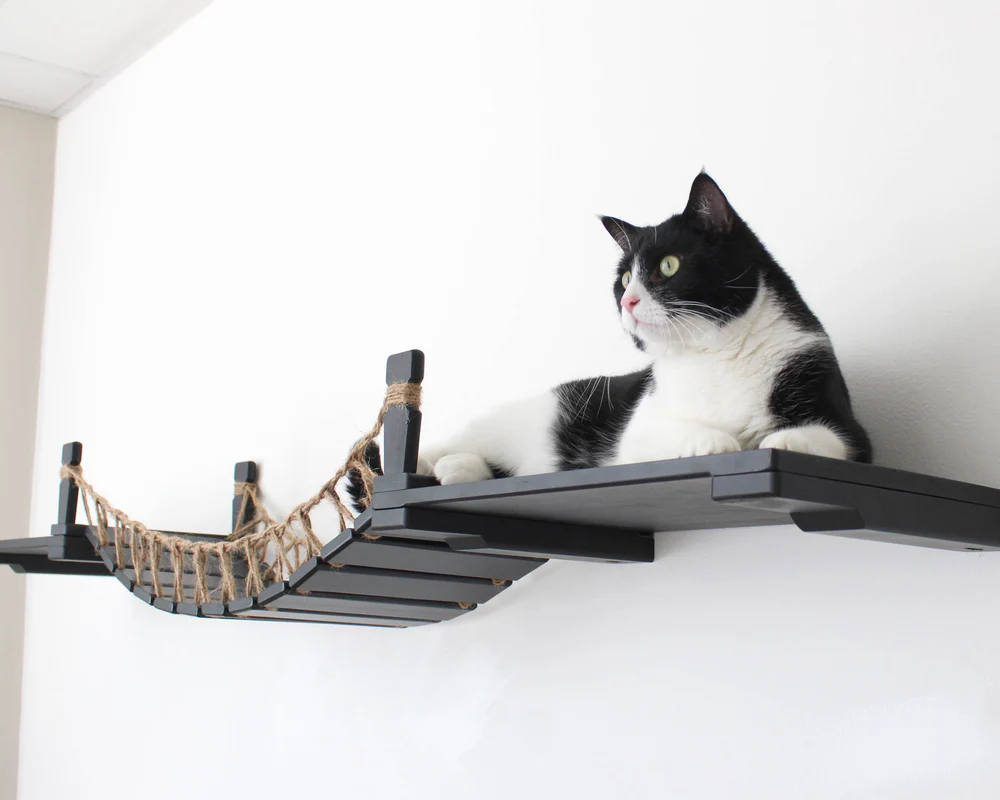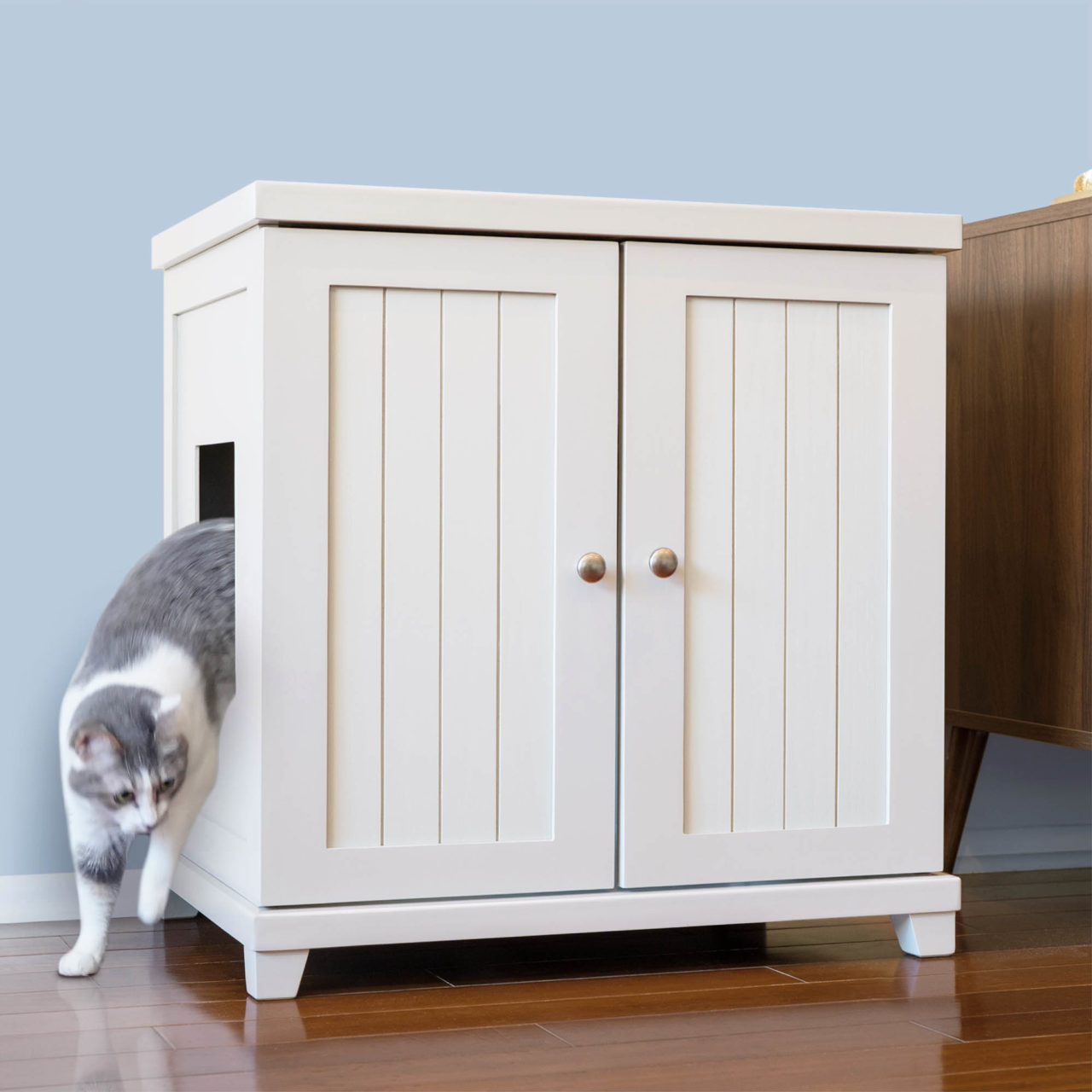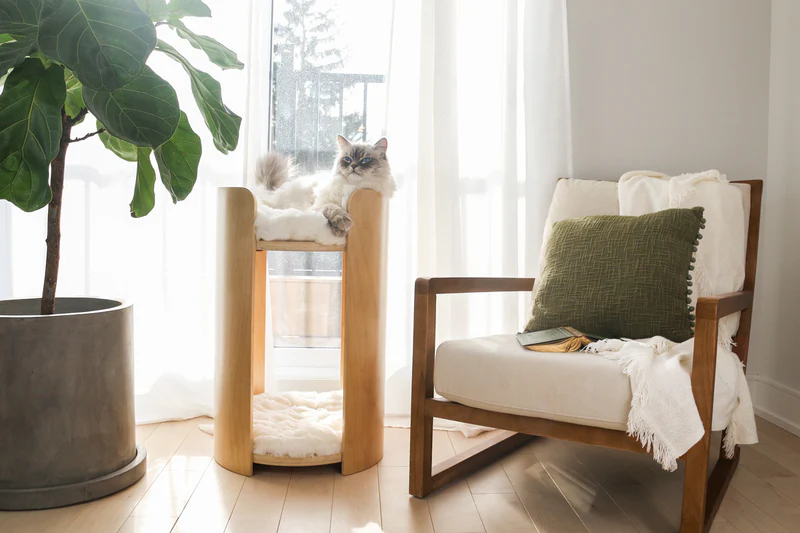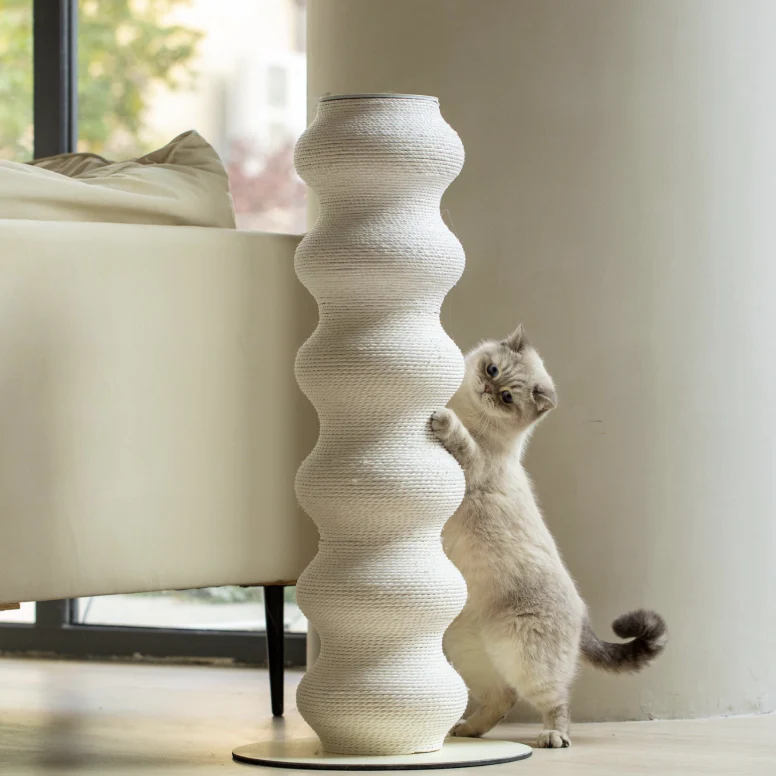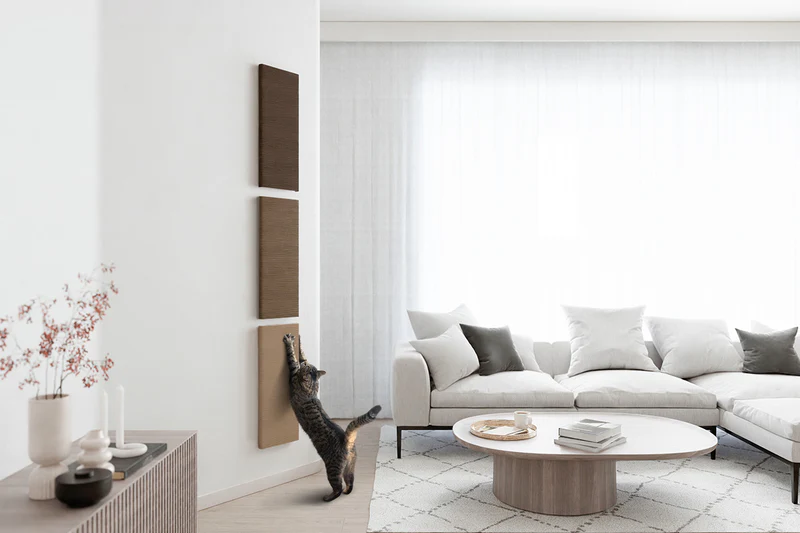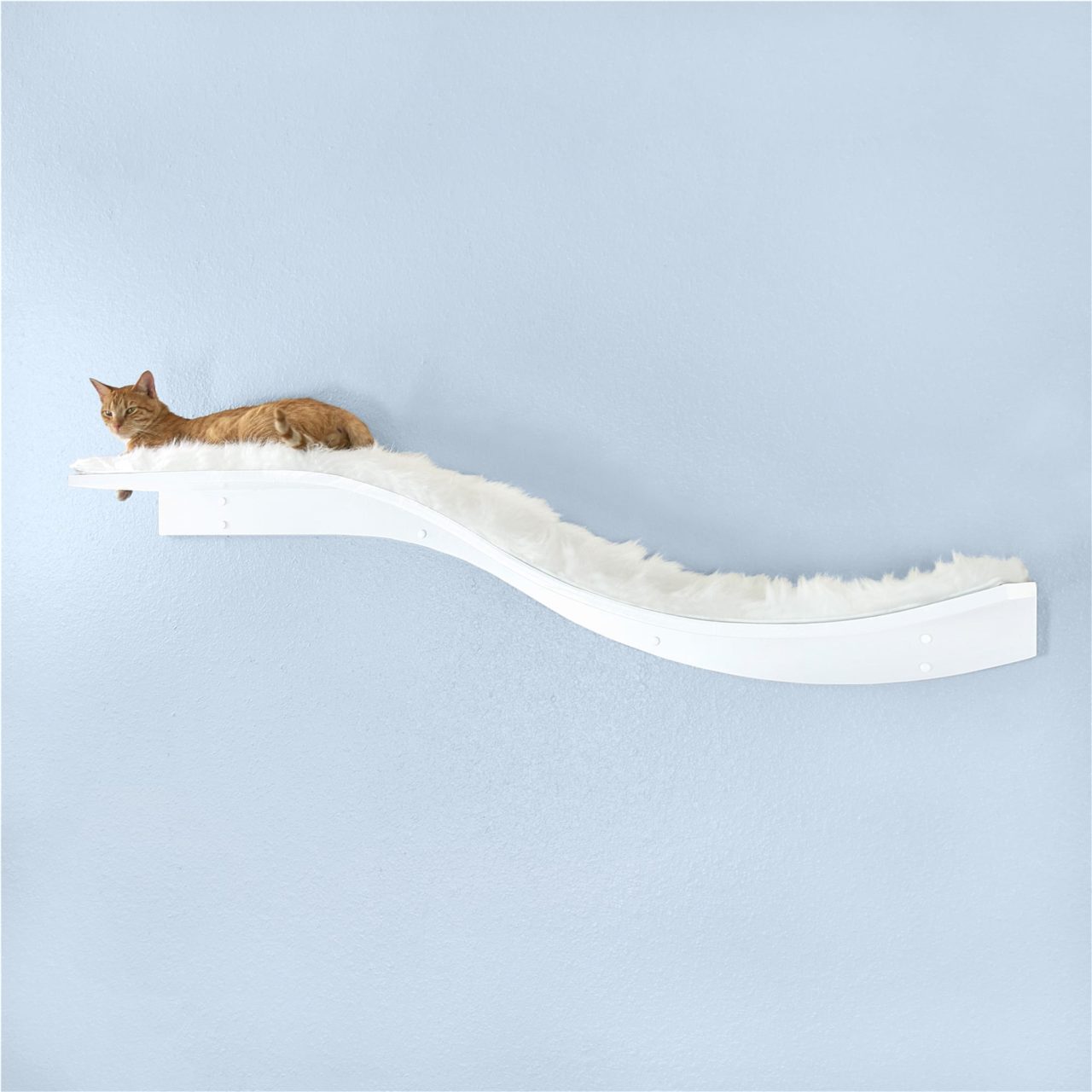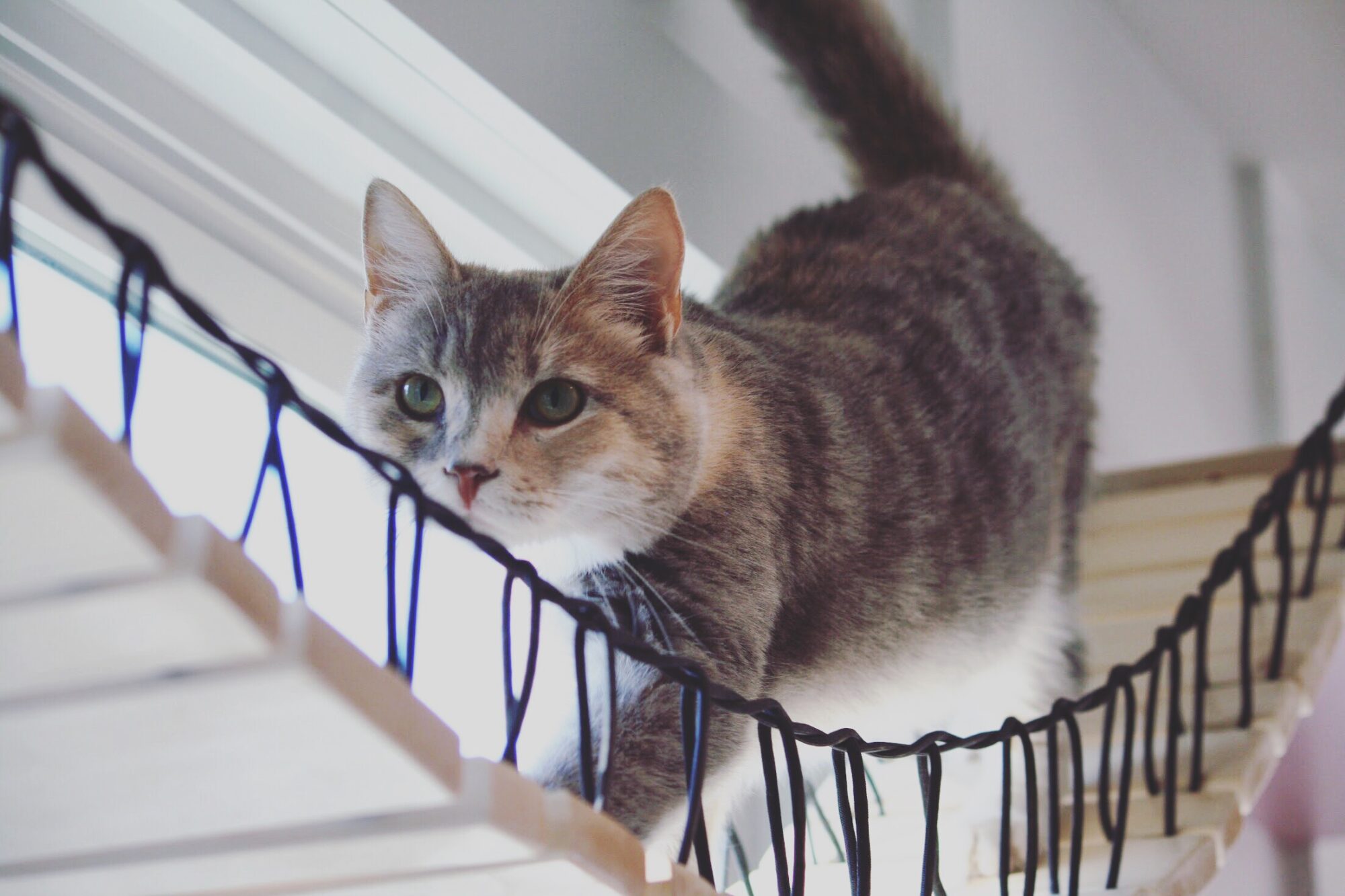
I wrote a blog about pet friendly design a number of years ago, and it’s still one of my most highly read and linked posts. Don’t we all want a home that’s beautiful AND accommodates our beloved fur babies? In the interim, I’ve had the unique experience of owning and operating a cat café, which was essentially a boot camp in cat behavior. While fostering and adopting out over 600 cats, I learned quite a bit about the ways cats inhabit their environment. I learned what kinds of surfaces and materials hold up, and the best ways to make cats feel safe and confident in their space. Also during this time, I had two elder cats pass away at home, and subsequently adopted a pair of kittens. These cute little menaces were quick to offer a few more life lessons in interior décor choices.
If there are two things I’m most passionate about, they are animal welfare and interior design. Here is where those two passions intersect. Adopting pets, especially rescue animals, is one of the very best things you can do, for them and for yourself. Pets enrich our lives, make us laugh and smile, and give us comfort when we need it the most. Our homes too are a place of comfort and refuge, and a well-designed space supports mental and physical well-being. So what could be better than both? A home specifically designed for you AND your pets is the best of all possible worlds.
I have tons to share on creating a cat-friendly home, so I’ve decided to break this blog into two parts. Part One is all about ways to enhance or modify your home to make it more accessible, livable, enriching and fun for your cats. In the next installment, Part Two will address material choices and durability, focusing on rugs and fabrics for the home.
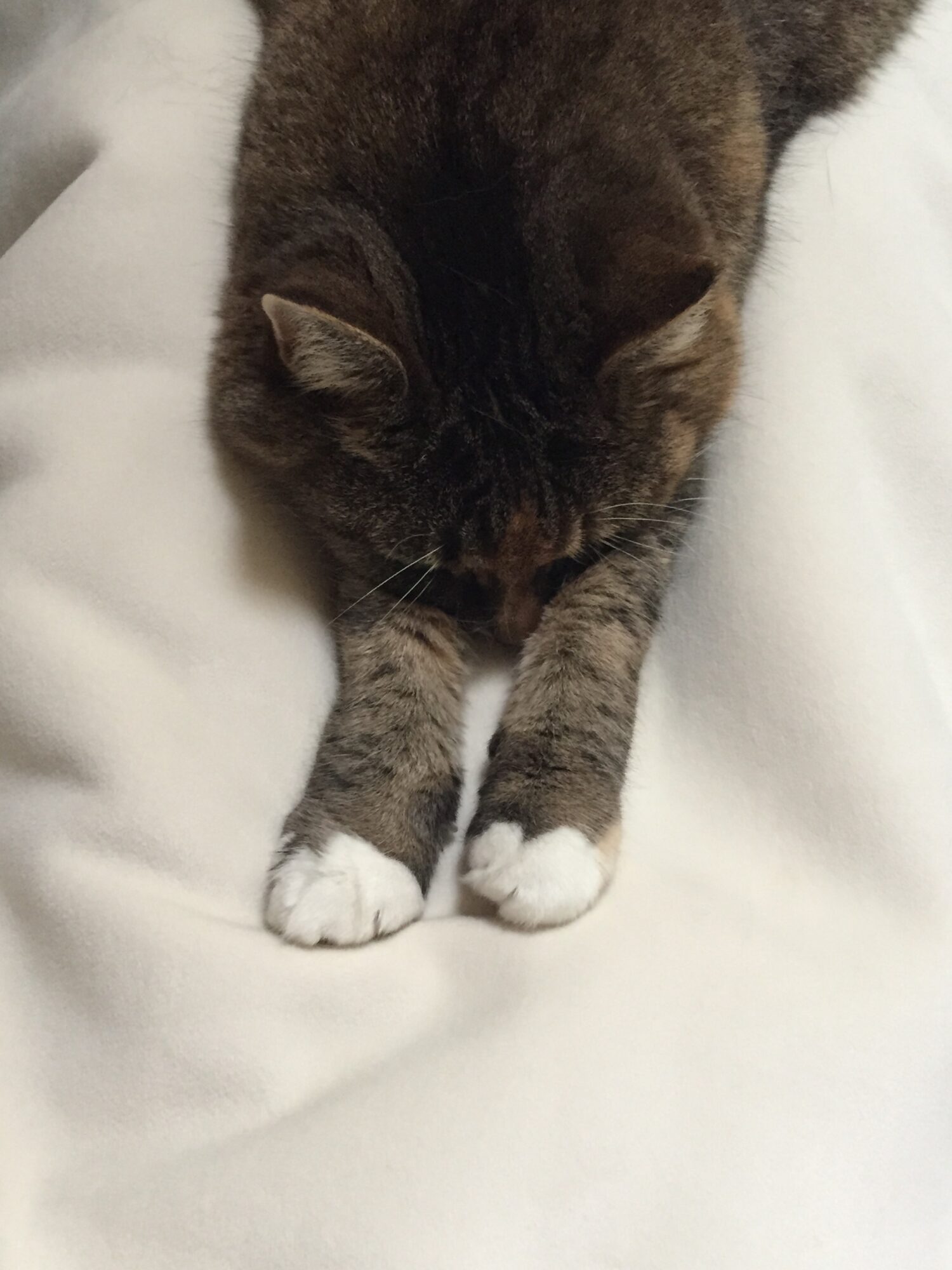
But FIRST, a Note on De-clawing
Please don’t. Under no circumstances de-claw your cat or kitten. I understand you don’t want your new upholstery torn up. While there are some things you can do to prevent and mitigate that (which I’ll get to in a moment), if the most important thing in the world to you is pristine upholstery, then adopt a fish, bird or lizard. De-clawed cats are much more likely to have behavior problems. A declawed cat may get nervous or skittish around you or other humans, understandably so. Declawing can change your cat’s personality, making him less friendly and sociable and even lead to more aggressive behaviors like biting. Declawing is an amputation, and it removes one of the cat’s natural defenses. Declawed cats are also more likely to have litter box problems, “going” outside the box because their paw pads are more sensitive. In the long term, de-clawing “solves” one problem and creates five new ones. It’s bad for your cat, and it’s bad for you. Don’t do it. I will die on this hill.
CATIFICATION
According to cat behaviorist Jackson Galaxy, catification is the art of making changes and adjustments to your home that meet the needs of both you and your cat. That’s an important point – it has to work for both of you! Cats have physical and emotional needs that should be taken into consideration when designing your space, including safety, scratching & marking, socialization, and elimination (litter boxes). I’ll cover all of those points below.
Safety
Cats like to feel safe and secure in their environment. A cat who feels safe will be a more confident cat, and less likely to be destructive in the home. Help your cat feel safe by providing him or her with both hideaway spaces and lookout spots.
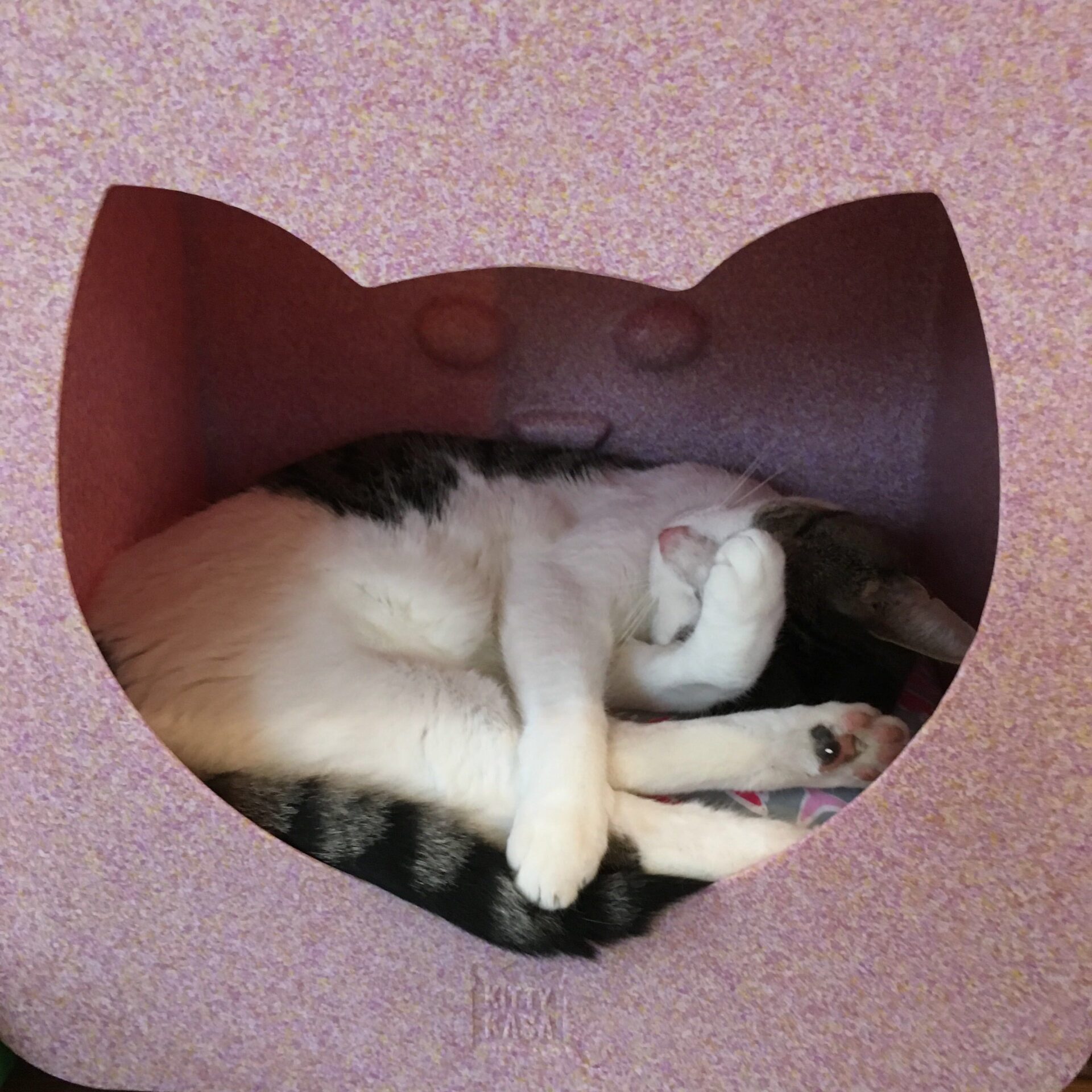
Hideaway spaces are any semi-enclosed bed, box, nook or cave-like space where your cat can rest and retreat from interactions with the household. This can take any number of formats – from carpet or fabric-padded cat beds to cardboard boxes. One of my cats is happy to sleep on a carpet sample under the bed. Some cats prefer a higher degree of enclosure than others, so you may have to try a few things to figure out what works for your cat. Provide your cat with one or more hideaway spaces, usually in a quiet part of the house and not too near busy areas, food bowls or litter box. If there are small children or dogs in the household, give your cat a hideaway space that is out of reach so they can truly get the quiet break they need.
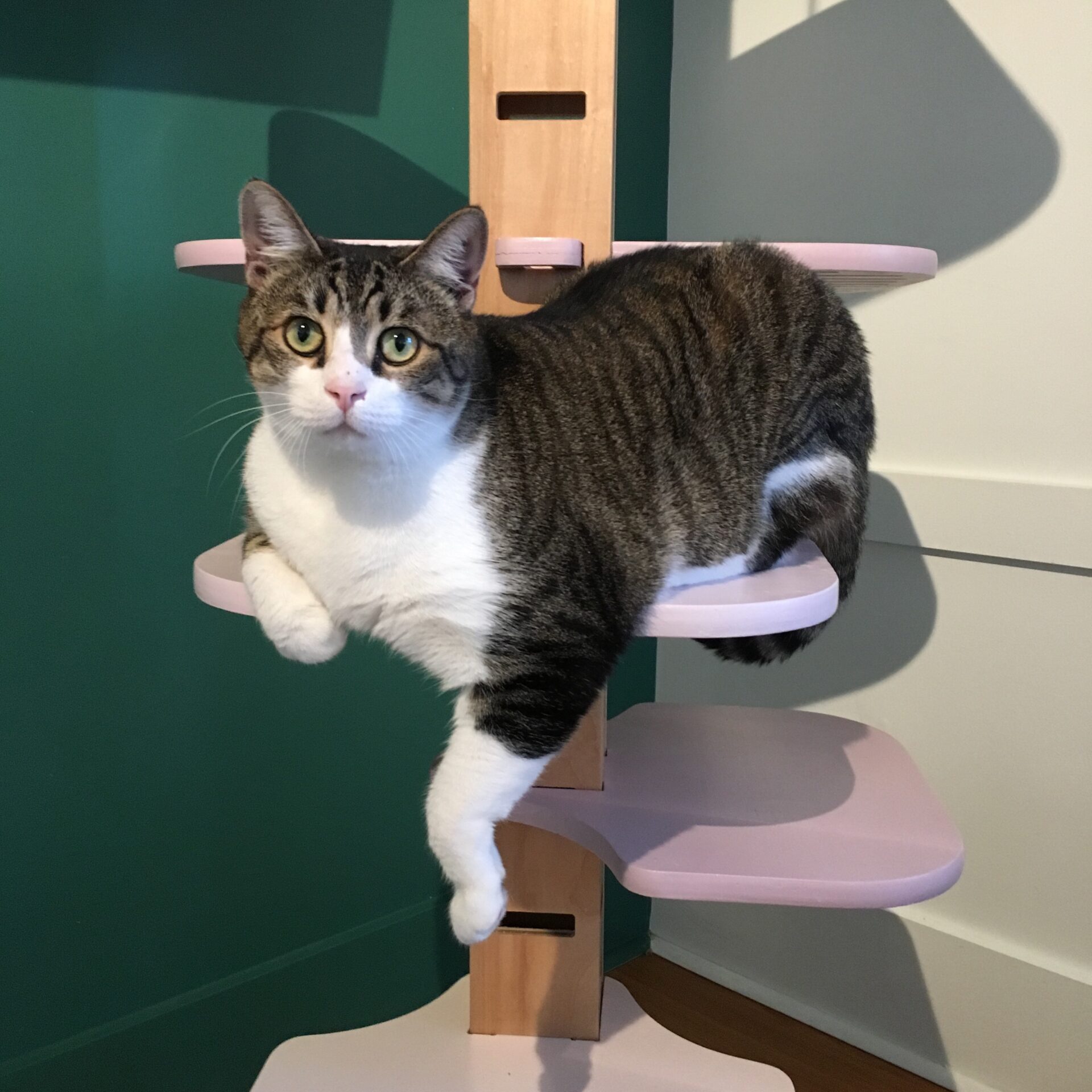
Lookout spots are usually off-the ground spots or perches your cat can jump up to, so she can get out of reach of others and keep tabs on the activities in the household. Ideally, your cat would love to have a lookout spot in every room of the home, but particularly in the busiest spaces, like the kitchen and family room. A lookout should be situated so your cat can see your comings and goings. In our home we have an interior window opening about 4 feet off the ground, cut into the wall separating the kitchen from the stairway. It has views to the front and back of our house, as well as to the stairs going up to the bedrooms. Our cats LOVE to sit in that window! Cutting a window opening doesn’t work in every home, but you can achieve a similar solution with a sturdy ledge or shelf, or a free-standing cat tree. Just be sure to place it in a location where there is interesting activity for your cat to observe. At the cat café, I designed a whole wall of cat shelves running from one end of the room to the other, linked by cat trees are each end. New cats would often spend the first few days perched on the upper shelves, until they felt safe enough to come down and explore their new environment.
Scratching & Marking
One of your cat’s most basic feline needs is scratching. Scratching rough surfaces like rope, cardboard, or fabric serves a few purposes for your cat. One, it helps them shed the outer casing that builds up over their claws. Second, it allows them to leave scent markers in their space that marks their territory. Scents are a highly important form of cat communication. They recognize places, people, and other cats primarily based on scent. In addition to scratching, cats also leave scent markers by rubbing their head against certain spots in the home, and even on you! Recognizing how important this behavior is, it’s critical to provide your cat with plenty of appropriate scratching surfaces. Especially if you want to discourage your cat from using the sofa as his preferred scratching spot.
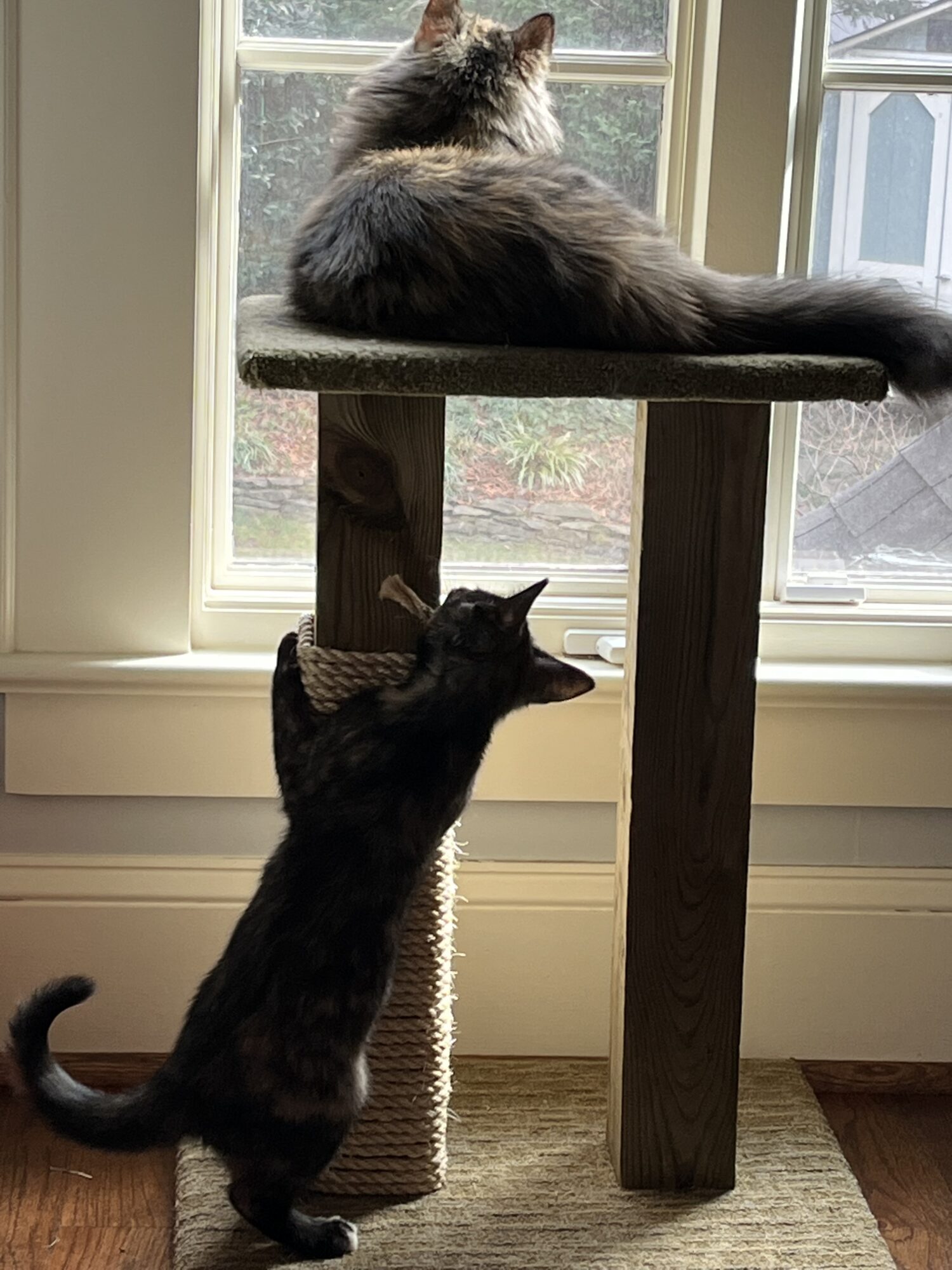
When it comes to scratching posts (and I’m using the word “post” as a catch-all here; there are various formats), there are two considerations: type of material and location. Discovering which material your cat prefers might require experimentation. Options include corrugated cardboard, natural fiber rope, sisal weave mats, and carpeted surfaces. My own cats have always seemed to enjoy sisal or rope-like scratching posts. If possible, choose one that has both a horizontal and vertical surface to scratch on. Some cats scratch horizontally, others vertically, and some do both. It’s really important that your cat post be sturdy, whether it’s freestanding or wall-mounted. If the post moves, rocks, or tips over it’s too flimsy and your cat won’t like it.
Possibly the most important thing when it comes to scratching posts is LOCATION, LOCATION, LOCATION. I’ve observed that cats like to scratch: A. Just after they get up from a nap. B. When you’ve returned home and they are greeting you. C. When they have just entered a room. Ideally, try to provide your cat with scratching spots for each of these occasions. A scratching post stuck in a far off corner (unless it’s near their nap spot) is unlikely to get much use. Try to place posts near the entry/exit point of rooms or juncture between rooms, near the main entry to your home, and near the places they sleep. I would plan on around one scratching post for every room in the house, maybe except for the bathrooms.
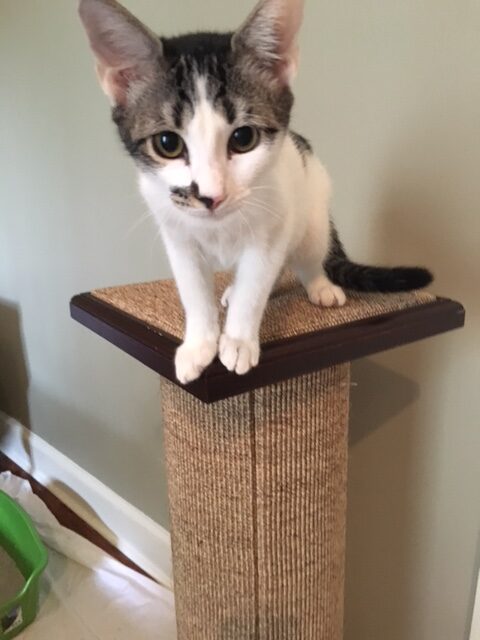
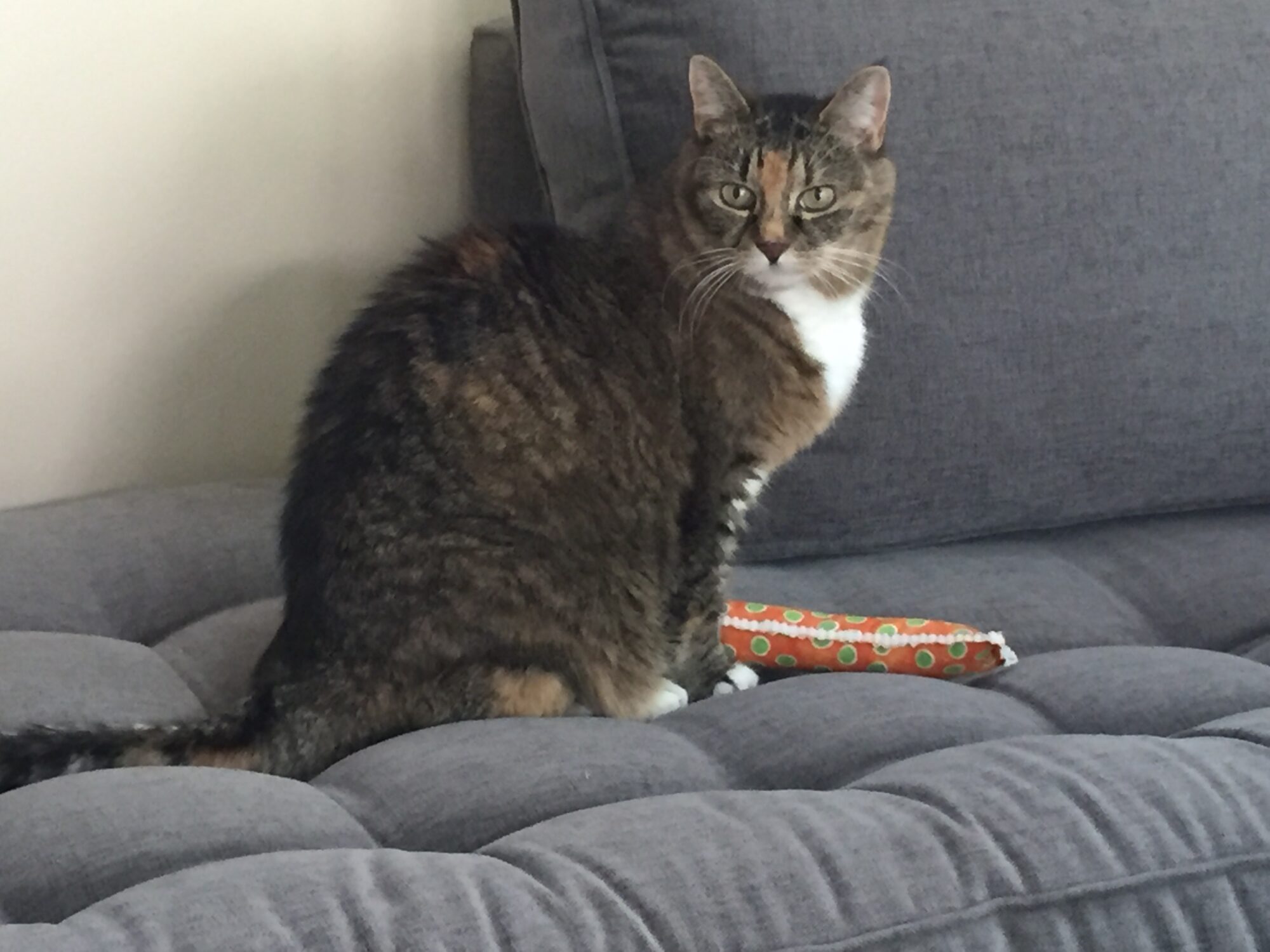
Tips for Furniture
Pay particular attention to the shape and style of sofas and chairs when purchasing new upholstery for your home. Sofas or chairs with wide, flat arms and deep cushion backs (i.e., deep enough for your cat to sit on) are very inviting, but they also become a magnet for scratching. Thinner, more rounded and curved upholstery profiles will discourage this to an extent. I’m also not above throwing a blanket over a chair arm or across a sofa for a little extra protection. Furniture placement matters, especially in relation to where the scratching posts are placed. A large vertical upholstered surface, like the back or side of a sofa right near an entry or pass through point of a room is a target. Mitigate the appeal of the furniture with a scratching post strategically placed right in front of that prime scratching spot. Rubbing a little catnip on the post can also help your cat associate this spot with good vibes. In our home we have a tall cat tree right next to the sofa, and nine times out of ten our cats choose the cat tree. Cats also love to scratch the sturdy outside corners of upholstery. You can try clear tape on the edges, or specially formulated cat- deterrent sprays. But honestly, I’ve found them of limited help. The best thing you can do is provide a scratching post right near that spot, and make it MORE fun to scratch than the furniture. Praise your cat with enthusiastically and give him a treat every time he uses the scratching post. Positive reinforcement is key!
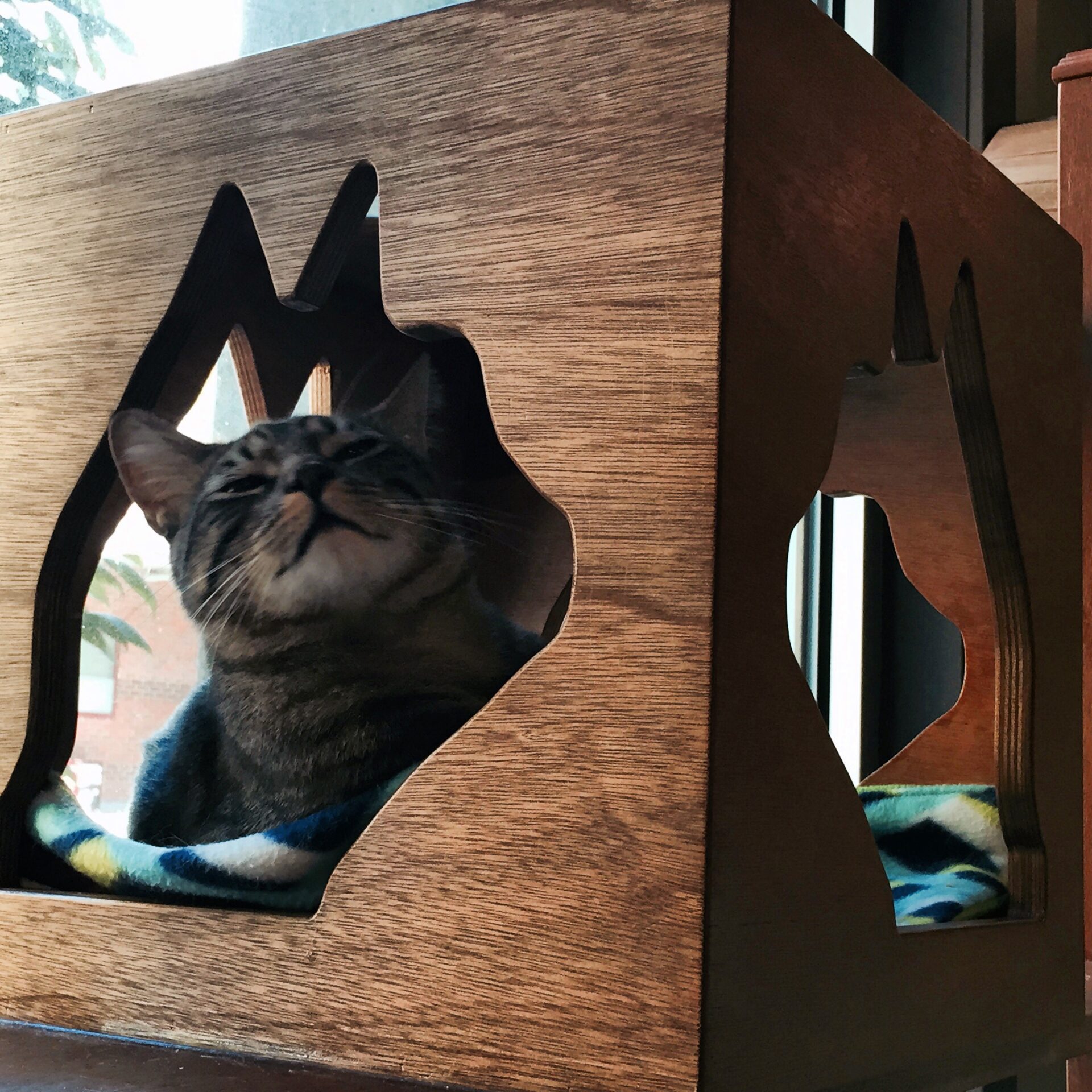
Socialization & Entertainment
Despite their reputation for being aloof creatures, cats are actually very social animals. In truth, most cats enjoy a mix of alone time and social time, but they want to decide for themselves when to engage with others. As an introvert, that is something I can appreciate! To foster their sociability, provide your cats with safe and approved places to hang out with you. Depending on the location, this can be the same as the “lookout spot”. For example, cats often jump up on kitchen counters to get your attention and interact with you, or because they’re curious what you’re doing. If you would prefer they not be on the counter, give them a more appealing alternative – a shelf, cat tree, or other kind of safe perch nearby. Same with the dining room and living room. While cat furniture can work great for this purpose, the top of a bookshelf, a deep window sill, a shelf, or a side table placed near a window can work just as well.
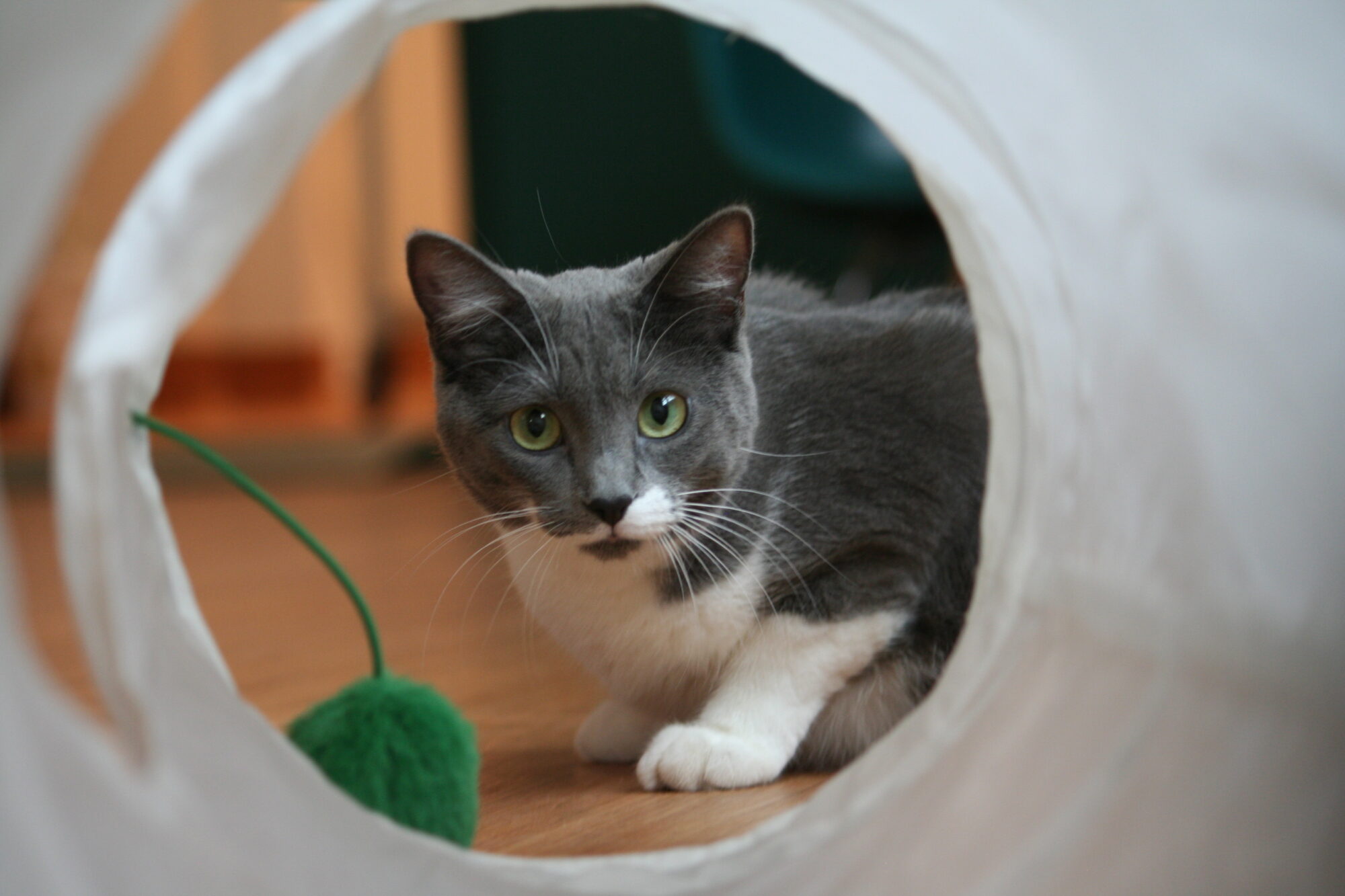
A bored cat is a cat that is more likely to make trouble in one form or another, so you’ll want to do all you can to create an enriching and stimulating home for your cat. Provide them with ways to get exercise – with interactive toys, places to climb, and safe paths of travel throughout the home. Many cats, especially when they’re young, just love to parkour (purrkour?) around the house and jump between surfaces. A long hallway is perfect for your cat to do the 50m dash, but make sure any launch points are stable and secure. Again, cat ledges and shelves can be mounted strategically to give your cat a viable path, one that routes them away from furniture and breakables.
Cats love looking out the window, watching bird and wildlife, and generally keeping an eye on the neighborhood. Give them as many window seat options as possible, with different views so that they can move around throughout the day. Again, a cat tree, window sill-mounted shelf, or a table or bookcase placed in front of a window with a soft bed on top can all work for this purpose. If you live in a place where it’s possible to hang a bird feeder outside the window, that will add even more excitement to your cat’s day.
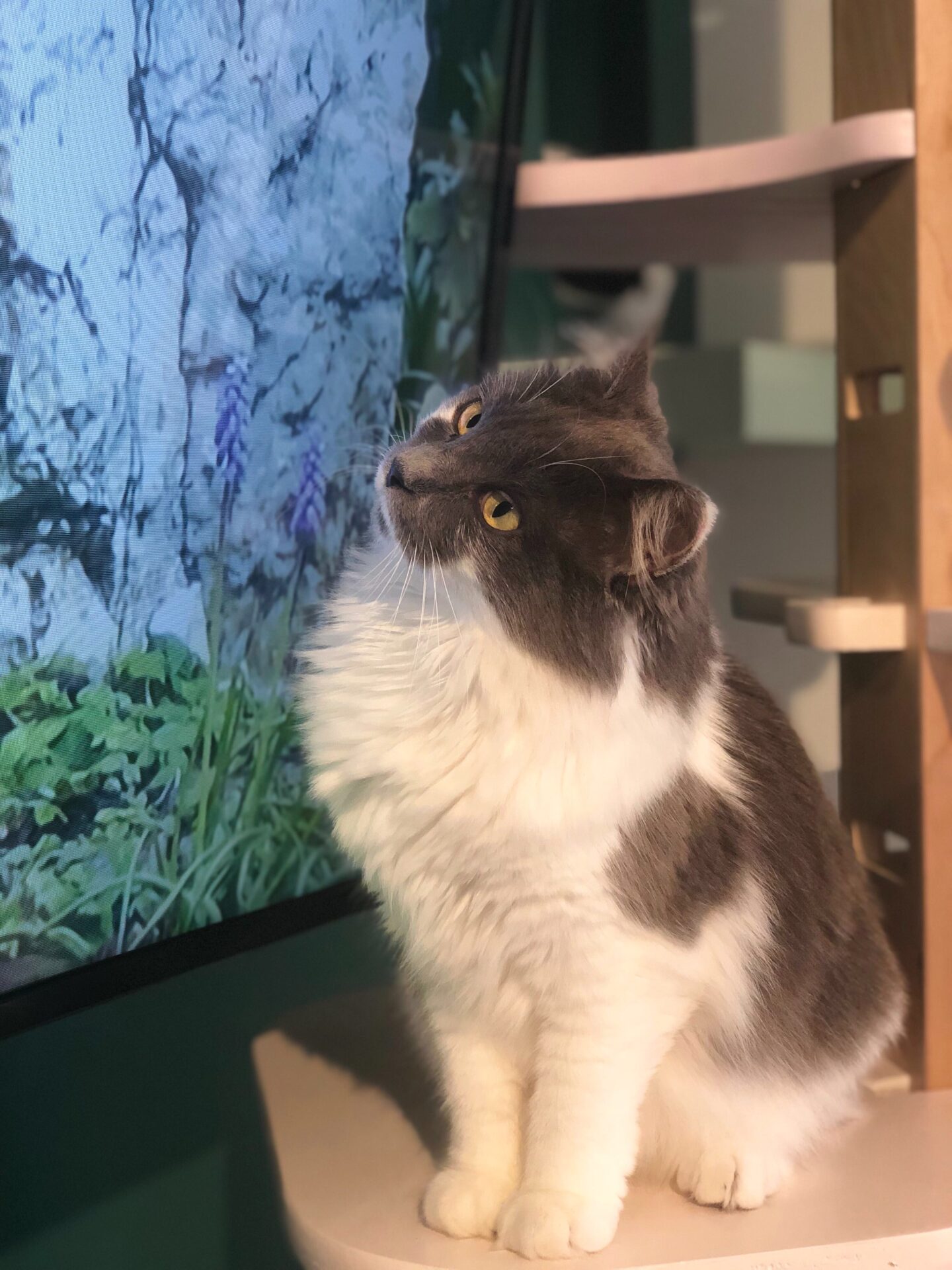
Another surprisingly effective form of entertainment for your cat is TV. YouTube has plenty of extended run-time footage of birds and wildlife, and there are DVD’s you can buy too. At the cat café, we had a TV with cat content playing all day long, and let me tell you, it was very popular! At home, my own cats also get excited when I put on a program for them, and will sometimes try to “catch” the birds on the screen.
Litter Box Tips
Of course, your cats will also need a litter box, or boxes. The rule of thumb is one per cat, which might sound excessive but it really is necessary, as many cats are very particular about their bathroom hygiene and will not go in a dirty box. Which might lead to them going elsewhere in your home, definitely not a problem you want! A litter box can be placed almost anywhere that’s convenient for you to scoop regularly, but should not be close to your cat’s food and water. If your home has more than one story, you should ideally have a litter box on each level. A bathroom or any room with hard surface flooring is ideal for the litter box, as it will be easier to sweep and keep clean. There are some fairly ingenious and attractive enclosures that help “hide” the litter box, which is totally fine as long they are roomy enough for your cat to maneuver around.
As far as litter box sand, there are a variety of options on the market. As a cat cafe owner caring for more than a dozen cats at a time, we tried them all! We loved Dr. Elsey’s Cat Attract and World’s Best Cat Litter.
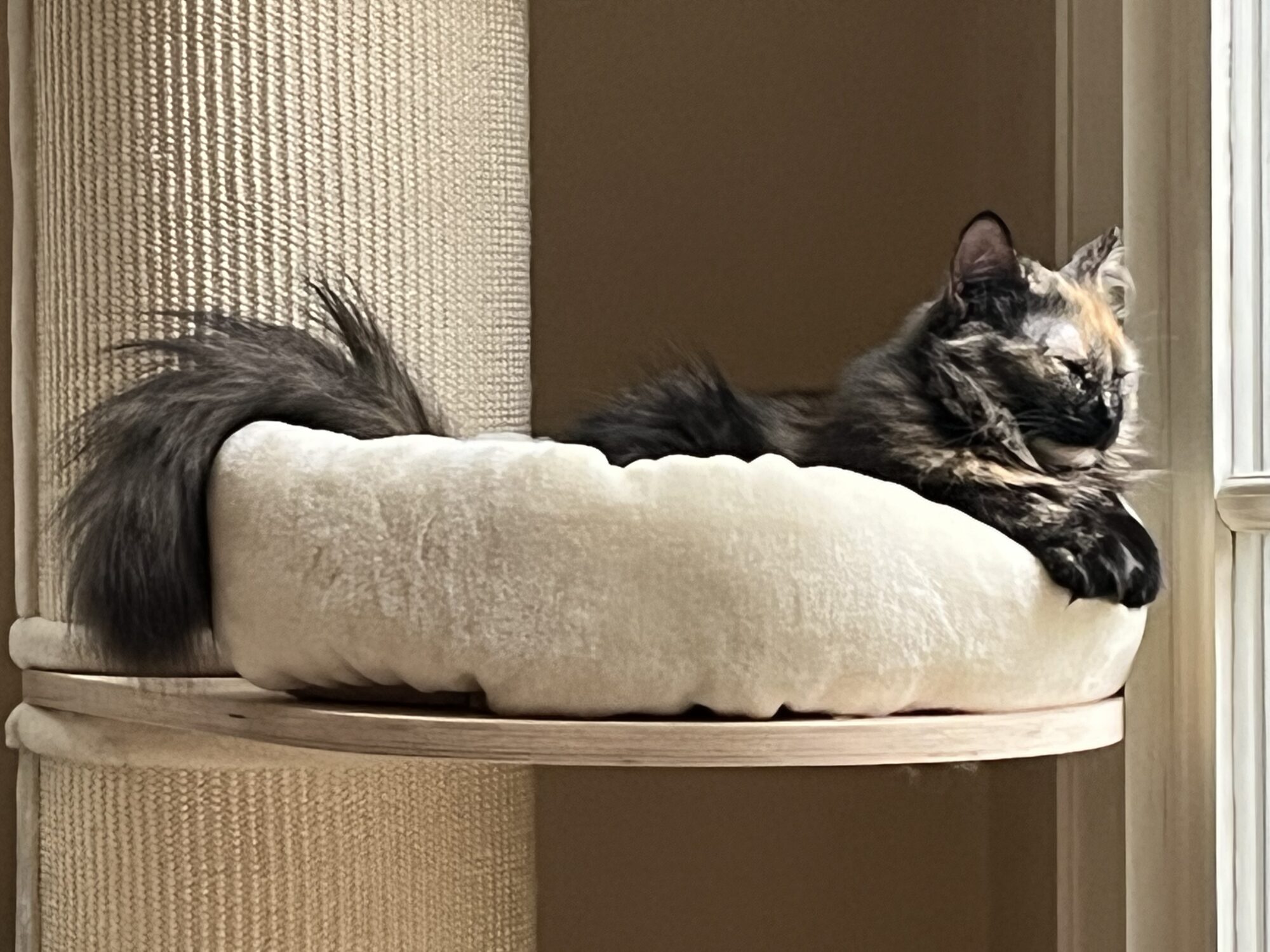
Aesthetic Considerations
When you catify your home, there’s no reason not to make it pretty! Cat furniture has really come a long way in the past decade or so. It used to be all you could get was an ugly cat tree covered in scruffy beige carpet. That’s one reason I built my own scratching post for my cats back in those dark ages of 2004. The post has been re-wrapped with fresh sisal rope twice and it’s still going strong! Today, you can find so many more aesthetically pleasing and modern options for cat beds, trees, and scratching posts/pads. I would choose your cat furniture very intentionally so that it fits into the space and enhances your interior, just as you would with your human furniture. Choose options that go with your style and color scheme, and don’t be afraid to get creative! Below are links to some of my favorite cat furniture designs:
I hope this post helps any cat-parents who wish to create a beautiful home purrfectly suited to their furry family members. Stay tuned for Part 2 where I dive into the details on everything you need to know about selecting the best materials and fabrics for your cat-friendly home.

Want personalized, expert guidance to define your Signature Style and implement it in your next home project? Send us a message today!

